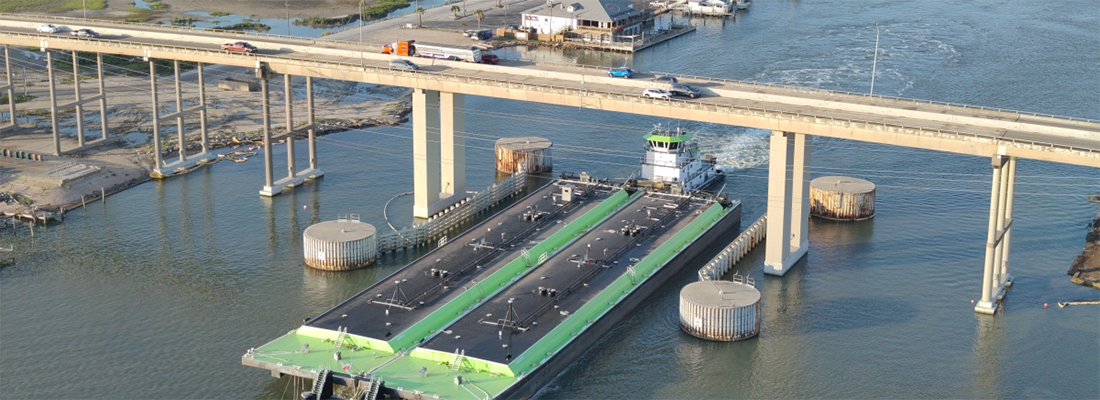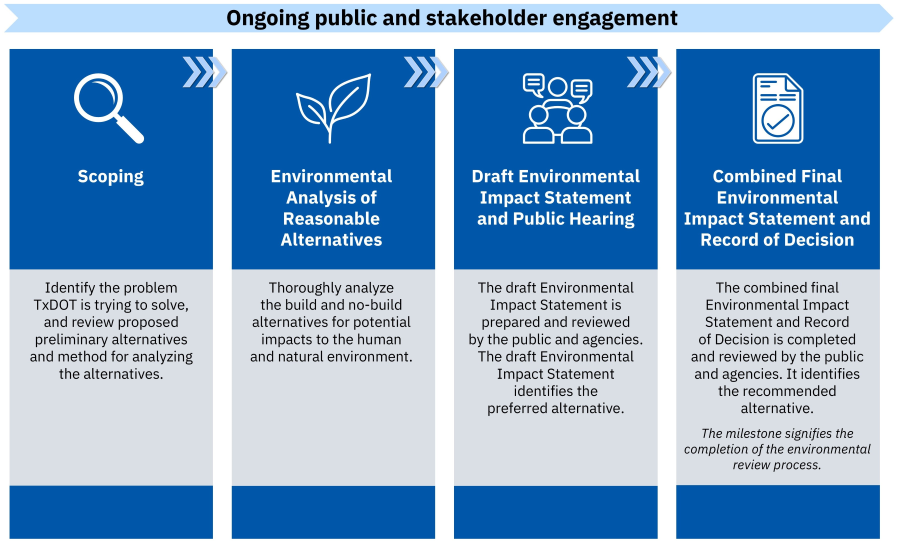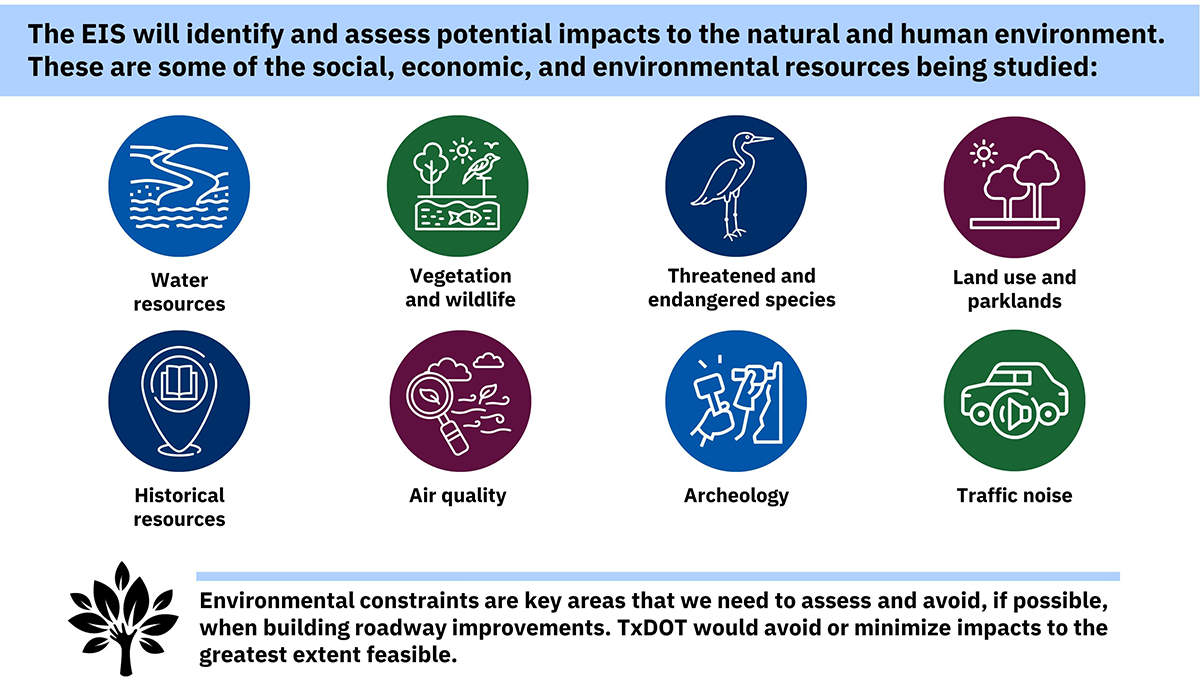
Environmental Impact Statement (EIS) process
TxDOT projects follow the National Environmental Policy Act of 1969, or NEPA. Through this process, TxDOT assesses the environmental effects of projects prior to making decisions.
In compliance with NEPA, TxDOT is preparing an Environmental Impact Statement (EIS), the most rigorous study there is for transportation projects. An EIS involves a data driven evaluation, resource agency coordination and public involvement.
This environmental process serves as an analysis of potential impacts to the human and natural environment, and it is anchored by transparent decision-making and ample public involvement opportunities.

Environmental analyses and constraints
TxDOT collects and evaluates information on environmental constraints so efforts can be made to avoid, minimize, and mitigate potential impacts. Information is collected from publicly available databases and information provided by resource agencies and the public. TxDOT must assess and avoid environmental constraints where possible. To the greatest extent feasible, TxDOT would avoid, minimize, and mitigate impacts. The study team continues to identify available information, including mapping and databases from agency websites along with GIS data layers to develop natural resources and human environmental constraints maps of the study area and its surroundings. These data sources provide an overview of important features and resources for early consideration in the environmental planning process.

Agencies' roles in the environmental process
Many resource agencies participate in the development of an Environmental Study at local, state, and federal levels. As lead agency, TxDOT has invited resource agencies and tribal nations to be involved in the environmental process as cooperating or participating agencies. Agency coordination is one of the first steps in the EIS process. Cooperating and participating agencies are listed in the Coordination Plan, which can be acccessed by clicking the link under "Downloads" on the right side of this page.
Downloads
Documents available for download regarding the ongoing environmental study:
- Federal Notice of Intent to prepare an EIS, dated Sept. 9, 2024
- Coordination Plan, dated Dec. 5, 2024
MEMORANDUM OF UNDERSTANDING: The environmental review, consultation, and other actions required by applicable Federal environmental laws for this project are being, or have been, carried-out by TxDOT pursuant to 23 U.S.C. 327 and a Memorandum of Understanding dated July 17, 2025, and executed by FHWA and TxDOT.